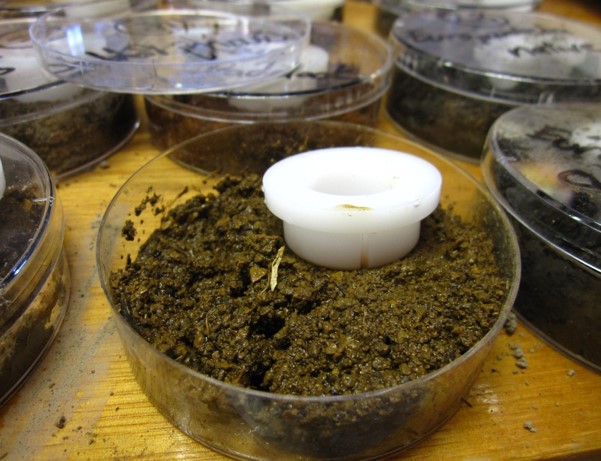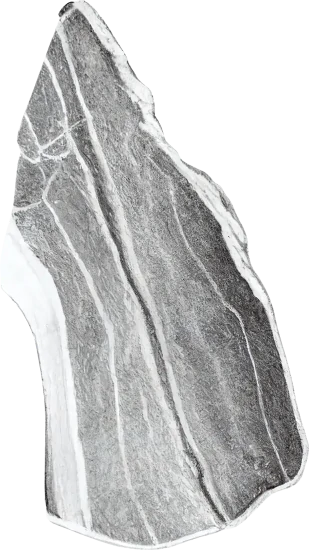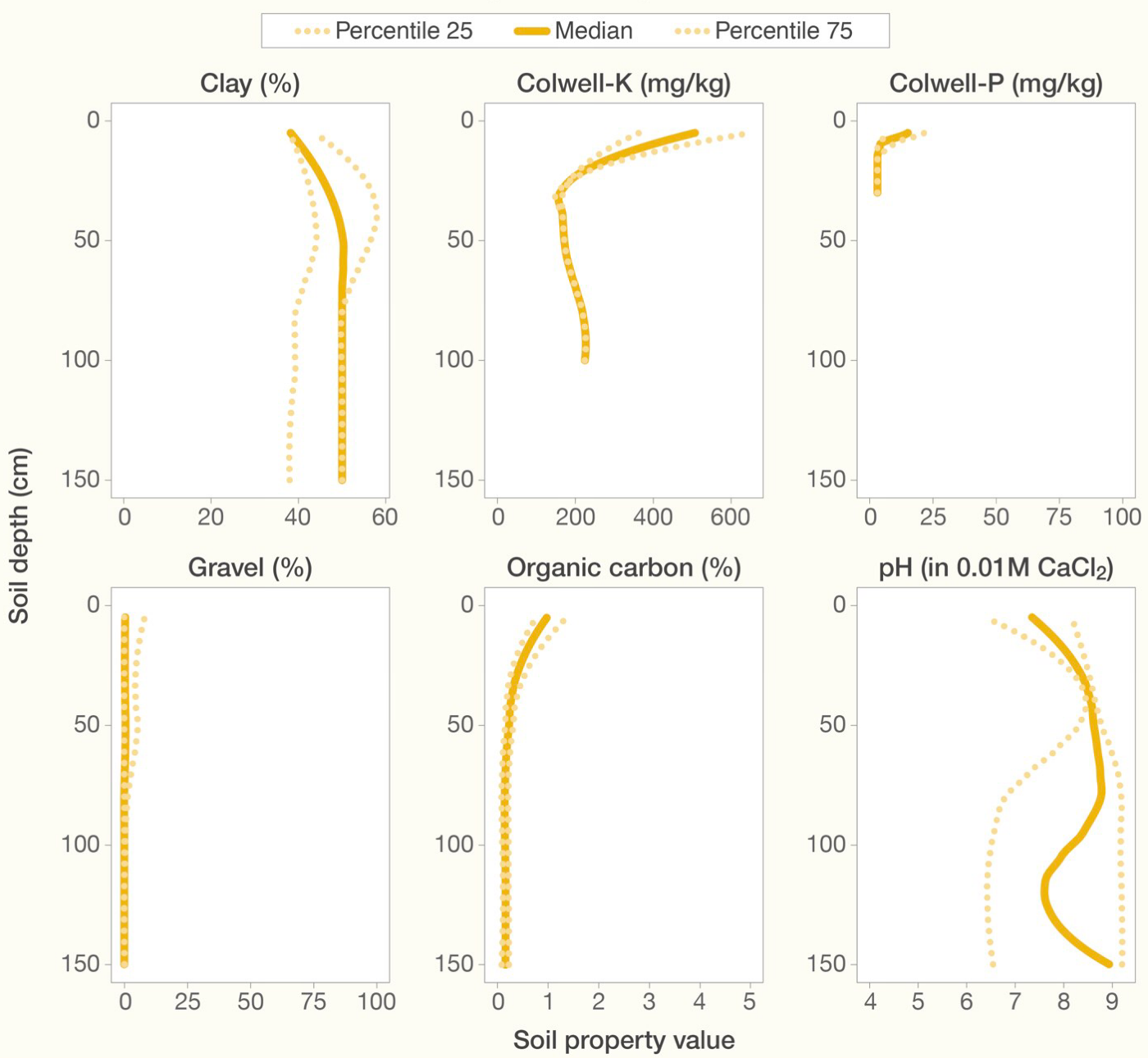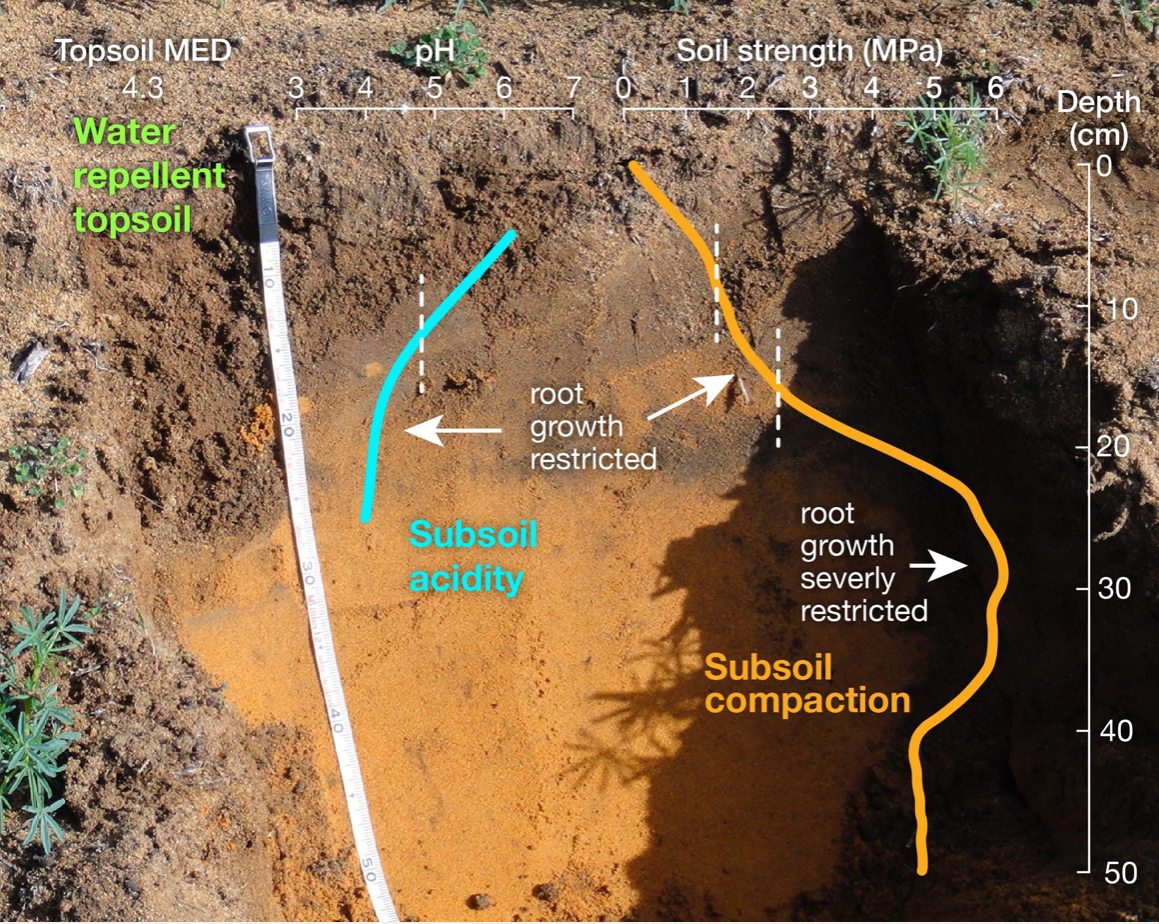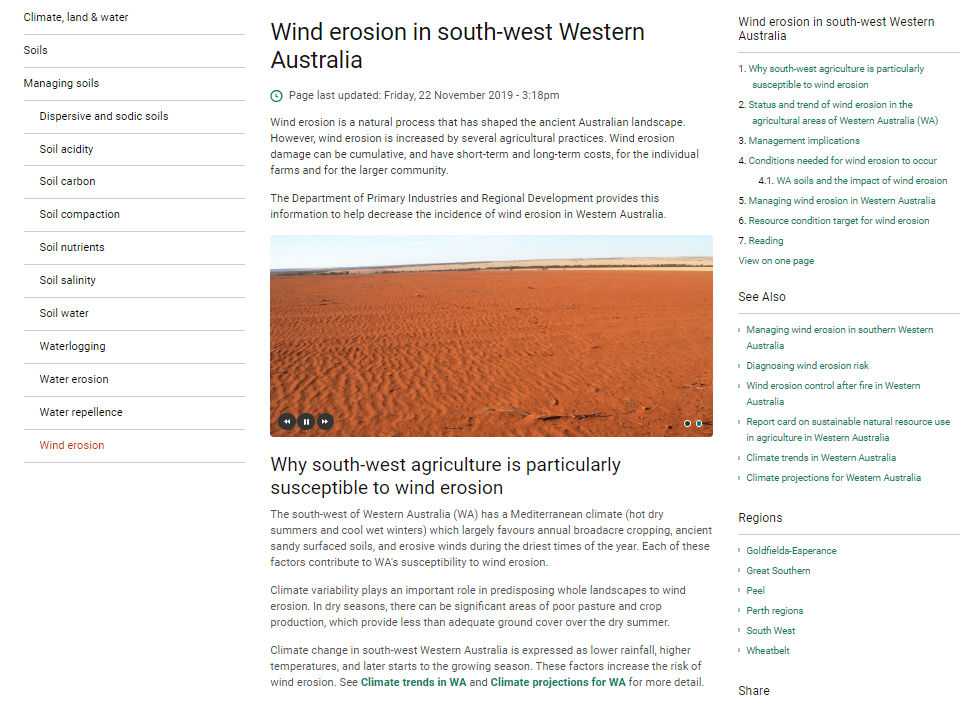Date
2021/02/17
Duration
5 min read
ebook
Soil Quality: 5 Soil Biology
Organisations
SoilsWest
Department of Primary Industries and Regional Development
Grains Research and Development Corporation
University of Western Australia
What is take-all?
The pathogen that causes take-all in cereals is Gaeumannomyces graminis var. tritici. Wheat is the most susceptible crop and while take-all infection is similar in barley, it suffers less yield loss following infection. The fungus can also infect oat, but has little effect on the growth or yield of the crop. Other crops such as triticale and cereal rye are less susceptible. Take-all infects only grasses, with legume pastures and crops such as subterranean clover, medic, lupin, canola, field pea and other pulse crops not infected.
During the non-cereal phase of the rotation in a paddock, the fungus is carried over on the roots of susceptible grasses or cereal volunteers. The density of fungus in the soil increases as the grass content increases during the non-cereal phase – the fungus survives over summer on residues of both cereals and grasses. During the past two decades, take-all has been greatly reduced in severity and occurrence through the effective control of grass weeds.
Take-all inoculum in the soil will quickly decline if no host plants are present or if there have been a succession of years with low winter rainfall.
Surveys of the broadacre agricultural region of south-western Western Australia showed that take-all infection is more severe and more prevalent in the high rainfall areas. Survival of take-all is also affected by soil conditions and tends to be longer in paddocks with high soil nitrogen, such as, where clovers or medics have previously been established. In environments without moisture stress, plants are better able to cope with the root damage caused by the fungal invasion. A drier finish to the season is unlikely to restrict take-all, but does make it difficult for the plant to obtain enough moisture through its damaged root system to sustain grain filling. As a result, yield may be drastically reduced.

Symptoms and management of take-all
Plants affected by take-all usually become evident in the crop after flowering, occurring in areas of up to several metres in diameter with indistinct and irregular edges. The fungus may also affect individual plants or all plants over large areas. The root infection can kill seedlings, but more often causes stunting and premature haying-off. The most characteristic plant symptom of take-all is blackened and brittle roots, which break easily leaving a square end. Plants need to be dug from the ground (not pulled, as the brittle roots will snap off) and washed thoroughly with clean water to reveal these symptoms. Moderately and severely infected plants may develop blackening around the base of the stems and crown. Removal of the leaf sheaths from the stem may reveal a black crust, or sometimes just dark-brown to black streaks or spots in plants that are less severely infected. A distinct symptom of take-all is that the centre of the root (the stele) is black, not just the outer surface.
Control of take-all relies on practices that minimise carry-over of the disease from one cereal crop to the next. The take-all fungus can survive between growing seasons in old crowns and roots of host plants. Any practice that encourages the breakdown of remaining plant stubble/residues will help to eliminate the fungus, provided new hosts such as grasses or cereals are not available for the fungus to infect. By far the most effective management to reduce take-all is to establish a rotation that includes a grass-free rotation or break crop and/or grass-free pastures; with the control of grass weeds during the summer also critical to effective disease management.
References
ebook Soil Quality: 5 Soil Biology
Murphy D, Hoyle F, Collins S, Huberli D, and Gleeson D (2021).






